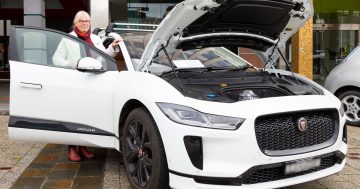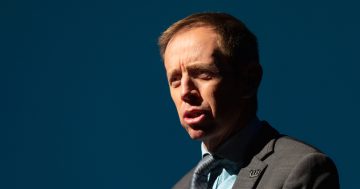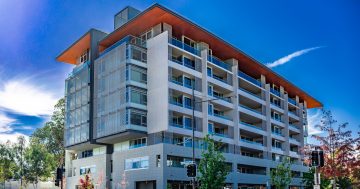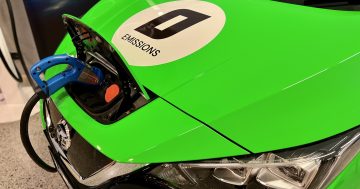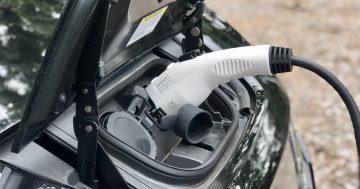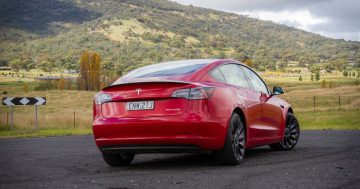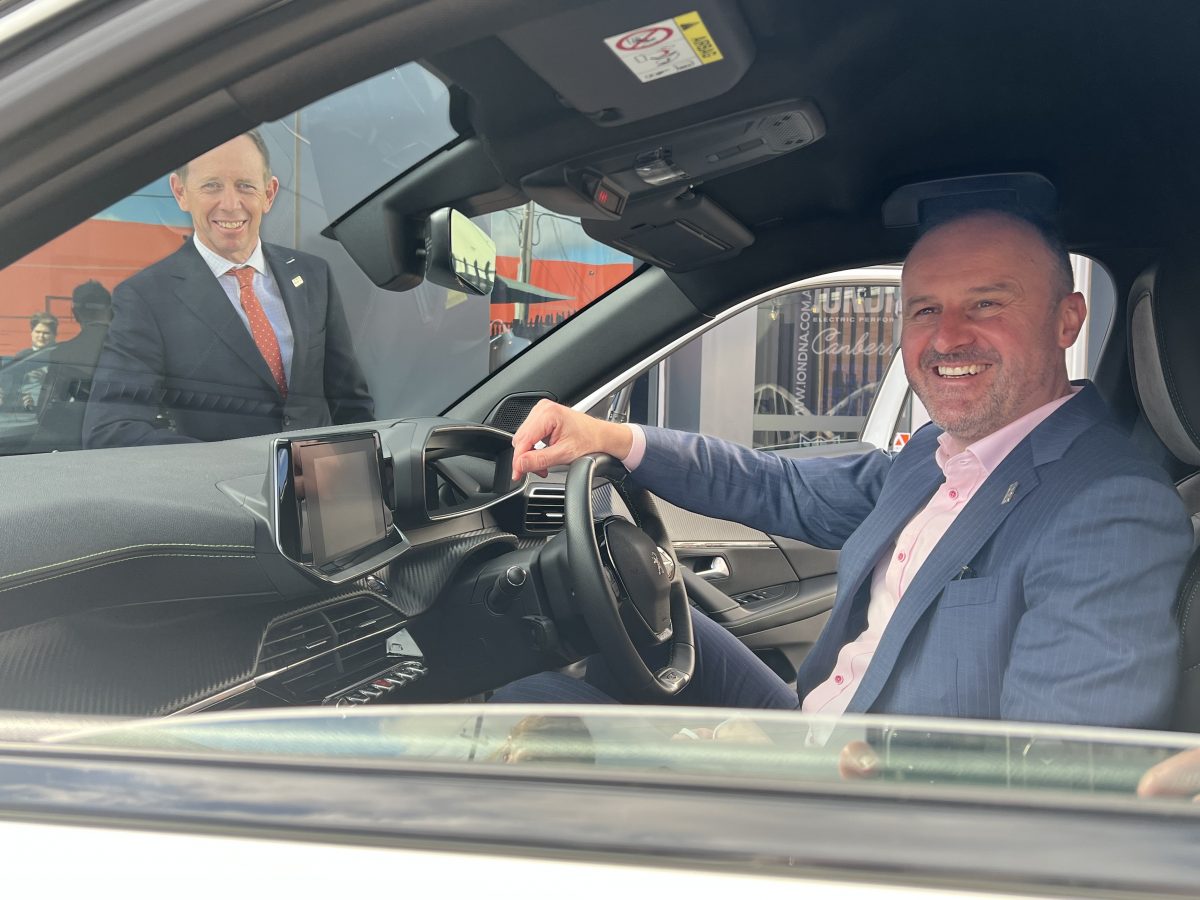
Chief Minister Andrew Barr and Minister for Energy and Emissions Reduction Shane Rattenbury are leading the EV charge. Photo: Lottie Twyford.
The ACT has thrown down the gauntlet to the Albanese Government to get moving on Australia’s transition to a zero-emissions transport system.
The Territory further polished its credentials as a world leader on climate change and energy policies this week with its announcements on electric vehicles (including hydrogen) and charging infrastructure.
It is fast becoming the little jurisdiction that could.
After meeting its 2020 goal for 100 per cent renewable generated electricity, the ACT will now ban new fossil fuel vehicles from being registered in the ACT from 2035 onwards and prohibit new fossil fuel cars from being introduced to the taxi or rideshare system by 2030 – an Australian first.
It is also overhauling the registration system, extending stamp duty exemptions, and will legislate for new apartment buildings to have electric chargers and provide 180 public chargers in the ACT by 2025.
You can even get an interest-free loan to defray the admittedly exorbitant cost of EVs.
In short, the government is doing its best to push the start button on the era of zero-emission transport.
Chief Minister Andrew Barr put it neatly when he said an internal combustion engine vehicle would soon be as quaint as black and white TV.
But compared with other parts of the world, Australia remains a laggard.
The states and territories can only do so much.
What is needed is practical national leadership, starting with a vehicle emission standard that would make Australia an attractive destination for the car makers to introduce more new models and develop an Australian marketplace where an EV is not a luxury vehicle beyond the reach of most drivers.
Volkswagen Australia publicly lobbied for the change last year but to no avail.
Labor dumped its vehicle emission standard policy late last year ahead of the election but Energy Minister Chris Bowen hinted earlier this month that the government could do more in this area.
“We will consider all viable options to build on the policy announcements we’ve already made,” he told the National Press Club in response to specific questioning on the issue.
The demand is already here. Anyone who drives one wants one, but not necessarily at the current prices.
And the oil shock has shown Australians just how vulnerable they are and how tantalising the alternative is.
While most charging can be done at home, fast-charging infrastructure between and across cities must be ramped up.
The Morrison Government was focused on co-funding charging infrastructure with the private sector under its Future Fuels policy, but all the targets of the previous government need to be reviewed to accelerate take-up and the infrastructure required to support it.
Many argue the electricity grid is ill-prepared for a sudden surge in EV ownership and increased renewable generation, something Labor’s Rewiring the Nation policy aims to address.
But smart chargers that take up power during the cheapest and quietest times of the night should ease the strain, as well as two-way EVs that can also feed power back into the grid, in effect becoming a home battery.
The new government also promises tax cuts to make EVs a little cheaper as part of its national electric-vehicle strategy.
But supply, and therefore cost and lack of a second-hand market, remains the stumbling block.
Federal Labor says its modelling shows 89 per cent of new car sales will be electric by 2030, and 15 per cent of all vehicles on the road will be electric. It has also pledged a government fleet target of 75 per cent new electric cars by 2025 and 1800 public charging stations.
But it needs to be more ambitious.
The Albanese Government need only look to its little cousin down the road in Civic for inspiration to set a similar target for the phasing out of fossil fuel vehicles and give the nation the fuel emission standard it needs to power the clean transport revolution.













